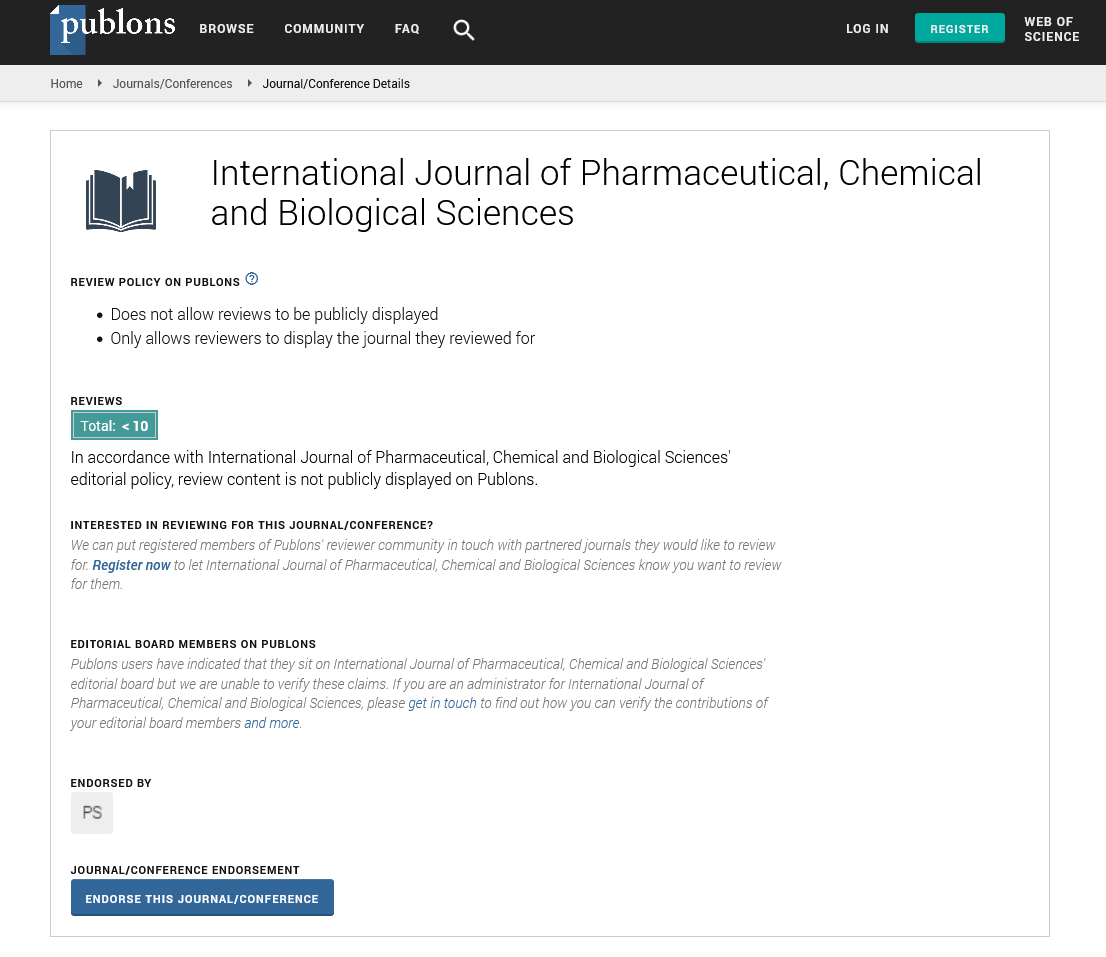Commentary - International Journal of Pharmaceutical, Chemical and Biological Sciences ( 2023) Volume 13, Issue 3
Drug Design: The Art and Science of Healing
Clara Jane*Clara Jane, Department of Drug Research, Leiden University, Netherlands,
Received: 30-Aug-2023, Manuscript No. ijpcbs-23-113681; Editor assigned: 01-Sep-2023, Pre QC No. ijpcbs-23-113681 (PQ); Reviewed: 15-Sep-2023, QC No. ijpcbs-23-113681; Revised: 20-Sep-2023, Manuscript No. ijpcbs-23-113681 (R); Published: 27-Sep-2023, DOI: DOI: 10.36648/2471-9668-13.3.3
Description
Drug design, often referred to as rational drug design or simply drug discovery, is the multidisciplinary field that aims to create new medications or optimize existing ones to treat, cure, or manage various medical conditions. It represents a harmonious blend of scientific principles, computational tools, and innovative technologies, all geared towards one noble goal: Improving human health. In this comprehensive article, we’ll embark on a journey into the fascinating world of drug design, exploring its history, methodologies, applications, challenges, and the exciting prospects it holds for the future of medicine. From ancient civilizations using herbs and natural compounds to alleviate ailments to medieval apothecaries concocting tonics and elixirs, the roots of drug design date back thousands of years. The 19th century witnessed the establishment of the scientific principles of pharmacology, as researchers began to systematically study the effects of chemical compounds on the human body. Iconic drugs like penicillin, discovered by Alexander Fleming in 1928, and aspirin, synthesized by Felix Hoffmann in 1897, were happy accidents that transformed medicine. As our understanding of molecular biology, biochemistry, and pharmacology advanced, the era of rational drug design emerged, offering a systematic approach to drug discovery. The first crucial step in drug design is identifying the biological target involved in a disease, be it a protein, enzyme, receptor, or nucleic acid. Once a target is identified, its significance in the disease process must be validated through experiments and data analysis. High-Throughput Screening (HTS) involves testing thousands of chemical compounds for their ability to interact with a target, leading to the discovery of potential drug candidates. Combinatorial chemistry techniques allow the rapid synthesis and screening of vast libraries of chemical compounds, expediting drug discovery. Understanding the three- dimensional structure of a target molecule, often aided by X-ray crystallography or NMR spectroscopy, enables the rational design of molecules that interact with it. By studying the properties of known ligands (molecules that bind to a target), researchers can design new molecules with similar properties. Computational methods allow for the screening of vast compound libraries against a target without physical testing, significantly reducing time and cost. Medicinal chemists synthesize and modify molecules to optimize their properties, enhancing their efficacy and reducing side effects. Drug Metabolism and Pharmacokinetics (DMPK) is about understanding how drugs are metabolized and distributed in the body is crucial for designing effective medications. Potential drug candidates undergo rigorous testing in the laboratory and on animal models to assess safety and efficacy. Human trials involve multiple phases to evaluate safety, dosage, and effectiveness, culminating in regulatory approval and market release. Many pathogens and diseases develop resistance to drugs, necessitating the constant development of new treatments. Balancing a drug’s efficacy with its potential side effects is a significant challenge in drug design. Conditions like cancer and neurodegenerative diseases often involve complex, multifaceted mechanisms, making drug design more challenging. Tailoring drug treatments to an individual’s genetic makeup is gaining momentum, with the promise of more effective and safer therapies. Biopharmaceuticals, such as monoclonal antibodies and gene therapies, are at the forefront of drug design, offering innovative solutions for previously untreatable diseases.
Acknowledgement
None.
Conflict Of Interest
None.

